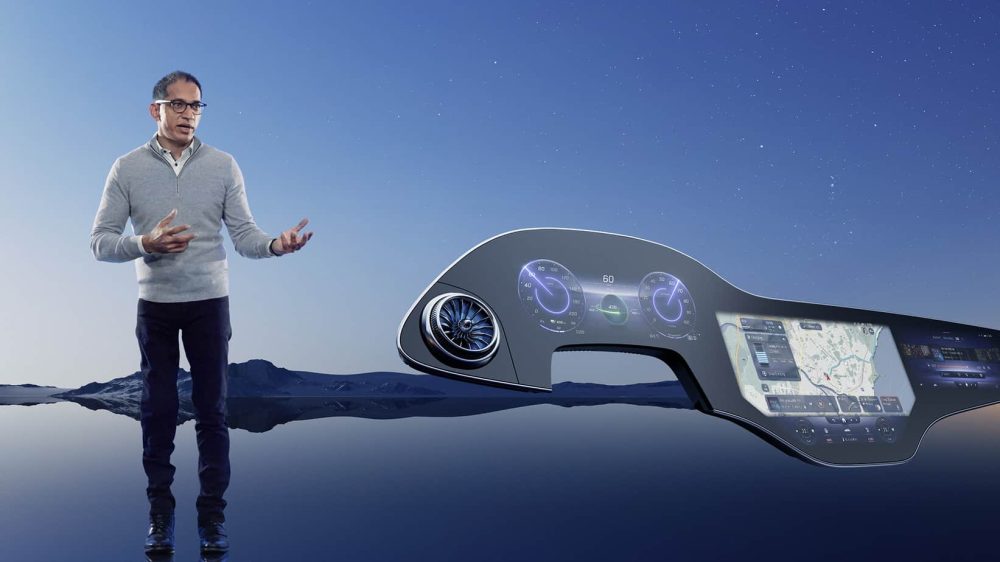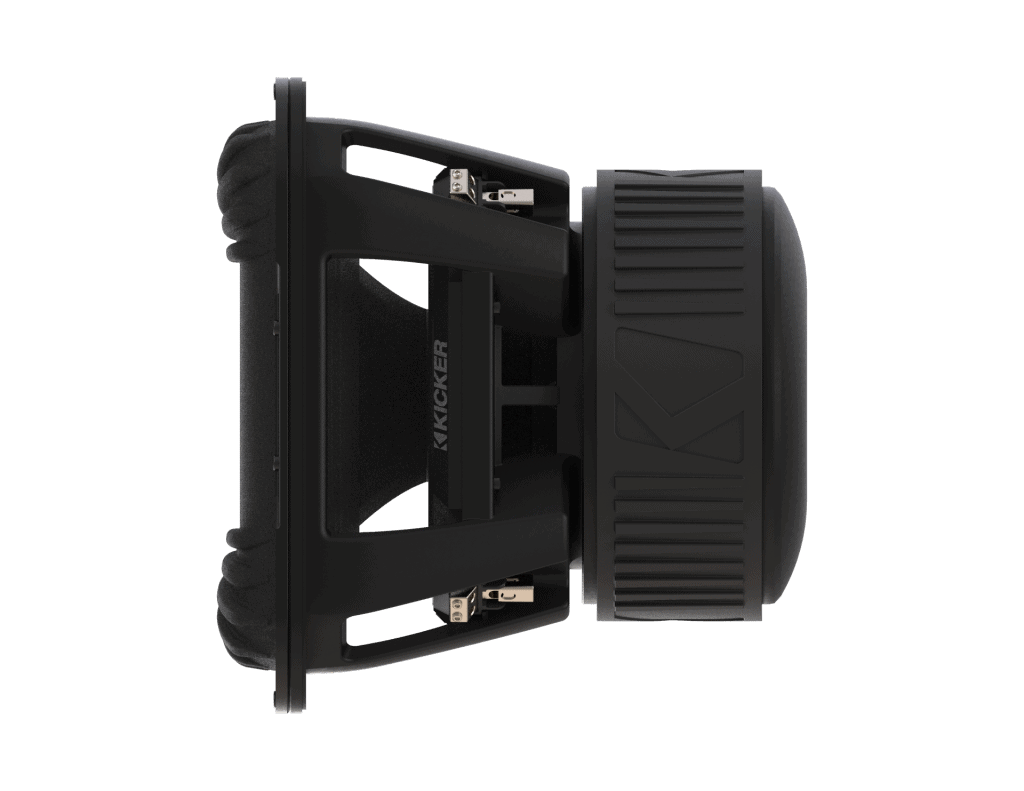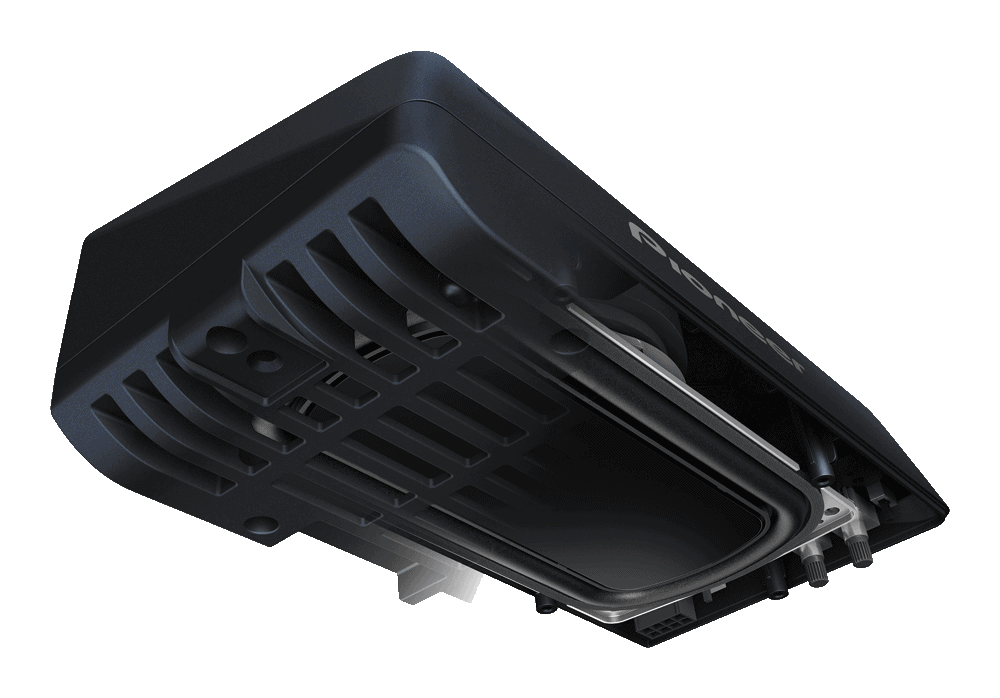We all long for the days of a “normal” CES where most of us would fly into McCarran Airport, and then possibly take an Uber or shuttle to their hotel. For those in the surrounding area of Nevada, Arizona, California and Utah, taking a road trip to CES made perfect sense – especially for tech-savvy individuals who have the latest ADAS (Advanced Driver Assistance Systems) to help ease the trip. Tesla’s Autopilot, GM’s SuperCruise, and Ford’s upcoming Active Drive Assist allow consumers to take their hands off the wheel, but they still need to keep an eye on the road without being burdened with full-on attentiveness. One industry worried about semi-autonomous vehicles is regional airline travel. When someone can enjoy the comforts and infotainment of a modern vehicle, and have most of the driving left to semi-autonomous systems, who would want to deal with the headaches of long delays and the TSA? We all will return to CES in person, and the semi-autonomous technology being introduced in 2021 will help ‘drive’ the radius of people commuting to the show by car even farther.
At its keynote, GM was very bullish on electrification of vehicles. It will take a lot of time for the technology to matriculate to the lower end of the fleet, but for amazing vehicles such as the Hummer HV with its Watts To Freedom (WTF!) acceleration launch mode, it makes electric exciting. The company even tied in the Bose audio system to bring the soundtrack of ‘power’ during the Watts to Freedom mode. GM is working on new battery technology in-house with partner LG to try and get 60 percent more power out of its packs compared to today’s technology. The company’s plan is to have 30 new electric vehicle introductions globally over the next five years. Some of that technology will go to GM’s new BrightDrop subsidiary focused on electric delivery vans. FedEx will be GM’s first customer for the vans, which are designed to carry complementary motorized electric pallets called EP1s.
Audi also introduced its fully electric sports car concept, the e-tron GT. Audi claims 0-60 MPH acceleration numbers in around 3.5 seconds. It uses a lithium-ion battery with an energy content of more than 90 kWh, which takes up the entire underfloor area between the front and rear axle with its flat design. This is typical of the ‘skateboard’ design similar to what Tesla and Rivian use to package the ‘powerplant’ efficiently. The advantage of this design is the extremely low center of gravity with its handling benefits. The center of gravity is comparable to the gasoline-powered Audi R8 supercar.
Discrete audio for different passengers is becoming a reality with the power of sophisticated DSP and headliner/seat mounted transducers. During the conference session Vehicle Tech Innovations Consumers Want, Andrew Poliak, CTO of Panasonic, mentioned upcoming technology that can help keep the sanity of all vehicle occupants. “Audio bubbles could soon become a reality in vehicle interiors. Private-zoned audio environments are not just for private-zoned audio. Companies have demonstrated we can create a listening environment that the person sitting next to you does not hear. But I think you can take it to extra lengths that will be interesting, such as ‘whisper agent’ where you can have navigation prompts directed to the driver and the rest of the car will not be able to hear it. My kids have the problem with TikTok… when the navigation prompt interrupts them just as they are trying to get famous!”
Mercedes MBUX Hyperscreen Infotainment System

Mercedes redefined what could be done with an instrument cluster and infotainment center stack, with the introduction of the 2018 A-Class model. That was revolutionary because for American consumers it introduced the most technologically advanced infotainment system in the lowest-price model. That strategy will hopefully pay off for luring younger tech-savvy customers who will stay with the brand. Now Mercedes is taking the concept of a flowing mega-screen even further with the introduction of the Mercedes MBUX Hyperscreen that will debut on the flagship electric EQS sedan. It stretches from A-pillar to A-Pillar with a gentle curvature along the way (just like the new Cadillac Escalade unit). The passenger also gets a display and can get into the infotainment action. With newly developed AI, the Mercedes is trying to do away with traditional menu layers, making it easier to change the radio station or enter a navigation address. Instead, the most important applications are always offered in a situational and contextual way at the top level in view. This way, numerous operating steps are taken away from the EQS driver, making it easier and safer. According to Mercedes CTO Sajjad Khan, “The MBUX Hyperscreen is both the brain and nervous system of the car. The MBUX Hyperscreen continually gets to know the customer better and delivers a tailored, personalized infotainment and operating offering before the occupant even has to click or scroll anywhere.” He continues, “the MBUX hyperscreen is connected to all components of the vehicle and communicates with them. This allows for a new form of interactivity and individuality. This is because the customer is at the center of development. We analyzed the customer feedback of the first [A-Class] MBUX generation and asked ourselves: ‘What do people need and how do they interact in the car? Especially in an electric car?’ The goal was a concept without distraction of the driver or complicated operation. And it had to be able to learn thanks to artificial intelligence: The MBUX Hyperscreen gets to know the customer better and better, providing a customized, personalized infotainment and operating offer before the passenger has to click anything. We didn’t want to build the biggest screen ever in a car. Instead, we have developed special screens with a perfect ratio of size and functionality for maximum user-friendliness. This is customer orientation and digital thinking 2021!”
Pioneering Installations
Pioneer showed off its new product lineup, and there were two standouts. First off was an exceedingly Lilliputian powered subwoofer designed for tight spaces including the passenger footwell. We think it will be a hit with hybrid vehicles owners who are unwilling to give up any additional trunk space. TS-WX010A compact powered subwoofer features a Class D amplifier, as expected, and comes in at under four pounds. It features a rectangular-shaped internal woofer, and can be hooked up with RCA or speaker-level inputs. Ted Cardenas, VP of marketing, notes “With the introduction of the TS-WX010A, Pioneer introduces a unique solution designed to enhance the listening experience with deep, powerful bass while seamlessly integrating physically, electrically and most importantly acoustically into the vehicle. Electric and hybrid vehicles are increasing in both popularity and availability but upgrading the audio in these vehicles presents challenges for traditionally large and heavy powered subwoofers.” Car Audio audiophiles are always looking to achieve the “bass up front” effect – and perhaps one of the easiest ways to achieve natural bass up front is to put the subwoofers in the front! The other Pioneer product is a head unit designed to make installations easier and flexible for oddly configured dashboards. The DMH-WC5700NEX is the latest Pioneer modular in-dash receiver that expands its lineup of products designed to provide vehicles with limited or restricted dash space an in-dash upgrade solution. The DMH-WC5700NEX includes Alexa Built-in, Android Auto, and Apple CarPlay. But the icing on the cake for installers is the availability of two extension cables (a shorter one and a longer version) so you can mount the ‘brain’ of the package separate from the faceplate. A lot of newer vehicles just don’t have the ability to swallow a double-DIN headunit in the cavity of the factory radio. Cardenas says, “With the DMH-WC5700NEX, Pioneer provides an automotive upgrade solution for many different vehicles that typically have been extremely restrictive or even impossible with regard to the installation of an aftermarket in-dash receiver, including several popular late model Chevrolet vehicles such as the Silverado and Camaro. With this solution, owners of these vehicles now have an option for adding Amazon Alexa, Android Auto, Apple CarPlay and more to enhance and upgrade their driving experience.” It is scheduled to hit the streets this summer – just in time for hot rod installations.



Mercedes-EQ. MBUX Hyperscreen
Alpine Also Going Slim
Alpine also introduced a slim head unit to help counteract the installation challenges of shallow dashboard cavities. The Alpine iLX-407 features Android Auto, Apple CarPlay and Bluetooth in the small mech-less unit. One notable feature is the ability of the unit to easily hook up to Alpine’s Power Stack small amplifiers that can power a small subwoofer system. These little amps bolt right up to the back of the iLX-407 head unit if the install has room for a traditional double-DIN. Mike Anderson, VP of Alpine notes, “Following the success of the tremendously popular iLX-W650, we sought to create a solution that captured everything the customer loved about the iLX-W650, with even more features. The features, along with the price point, will solidify the iLX-407 as one of the most impactful audio upgrades on the market.”
Operation Ground & Pound with Kicker
Even as autonomous and infotainment technology grows, there is still a desire for old-school car audio and fidelity. It is great to see new designs for subwoofers. At CES, Kicker showed off its Innovation Awards subwoofer: The Solo X L7X. It was a ground-up reimagination of the original and radical Solo X square-shaped woofer. Kicker wanted to set world-class levels of mechanical excursion and musicality. Steve Irby, president and founder of Kicker, notes, “We’re very happy to win the Innovations award. This is a radically improved version of the original Solo X, and to be recognized for the amount of work and creativity we’ve put into making it a reality feels really good.” It will be offered in 10-, 12- and 15-inch versions for those who want to strike fear into the hearts of innocent pedestrians. “The concept of the new Solo X is to take it to the next level,” Irby said. “It is designed with very tight tolerances. It has more power, more stroke, more Xmax, and still has a field-replaceable cone. The new design allows the Solo X to be extremely loud, but also be extremely musical.” The no-glue reckoning system uses a unique surround compression system and bolt-on spider landing, and is designed specifically to make speaker repair possible in only a few minutes time. This system comes from Kicker’s participation in SPL sound-off events where woofers are pushed to the limit, and the ability to repair them in between rounds can be essential to win competitions.
Even though we were not able to connect in person at CES 2021, it remained a viable launch pad for new OEM and aftermarket vehicle technologies. Perhaps in time for CES 2022 we will have an electric vehicle with self-driving capabilities shuttle us to Vegas. All we need is some aftermarket infotainment and audio upgrades for the ultimate ride back to the show.

Brett Solomon is the lead reporter and writer on 12V products and retailers for Dealerscope. He has been covering the mobile electronics industry for over 20 years.





















